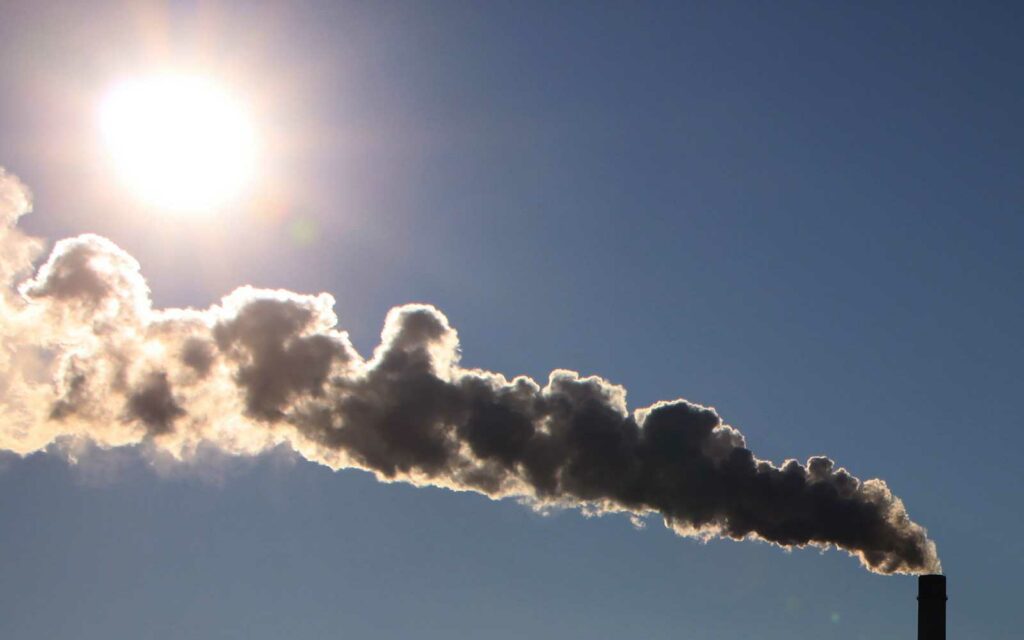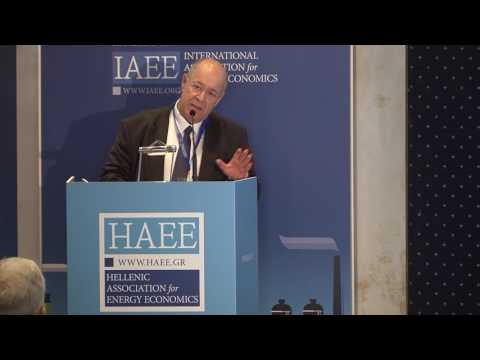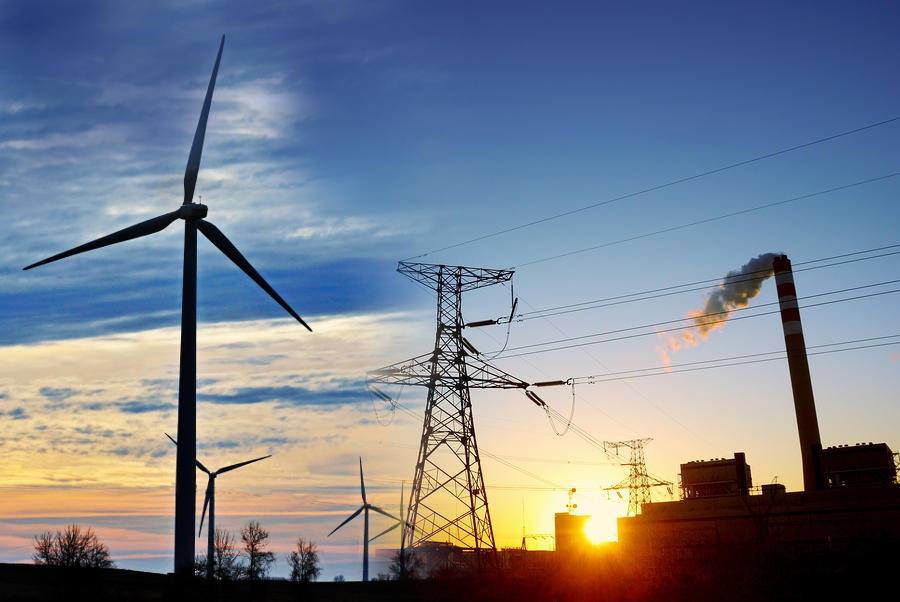The ceremony of signing a contract between General Electric and Elektrownia Ostrołęka C [Ostroleka C Power Plant] (which belongs in half to Enea and Energa) was accompanied by a storm and heavy rain. Ancient Romans would see this as an evil omen. However, a local PiS deputy, Arkadiusz Czartoryski, said that for Christians, “rain was a sign of the Holy Spirit’s presence”. Its assistance may indeed have to be relied upon as, despite politicians’ declarations, the future of the power plant is still unclear.
Details of the contract signed on July 12 are of course unknown. It is known that GE consortium will build a new powerplant with the capacity of approx. 1,000 MW for over PLN 6 billion gross. It is not known, however, whether the contract contains any provisions in the event construction financing is not secured or the project turns out to be completely unprofitable in case Ostroleka C does not win auctions in the capacity market.
This ceremony also provided an opportunity to reiterate arguments for construction of Ostroleka power plant. We analyzed those previously on multiple occasions. As a reminder, discussed herein, are the two strongest ones.
A new power plant in Ostroleka is indispensable for the domestic power supply grid security.
There are no documents of any kind which would support this thesis. On the contrary, in 2014, Polskie Sieci Energetyczne (PSE) [Polish Power Grid Operator] informed Najwyzsza Izba Kontroli (NIK) [State Audit Division] that a decision to abandon the planned construction did not threaten power supply grid security in any way. Additionally, in a letter of 2016, PSE informed that the old units at Ostroleka power plant would not even need to be operational to support the grid after a new 400 KV line is launched in Olsztyn. This means that with respect to balancing supply to the grid, no unit will have to be operational in Ostroleka.
he same NIK report also indicates that, in 2011, the terms under which new power plants would operate, i.e. potential Ostroleka, and already opened Kozienice (Enea), advanced Opole (PGE) and Jaworzno (Tauron) plants were compared. “It was determined that Ostroleka C may not have the competitive edge it needs due to (…) higher costs of fuel transportation and higher capital expenditure resulting from accompanying investments.”
A new plant in Ostroleka is needed to synchronize Poland with the Baltic countries.
Documents published by both PSE and a Lithuanian grid operator LitGrid, as well as the European Commission, nowhere in their content indicate that a new generating plant is needed.
When asked by WysokieNapiecie.pl, Edward Siurnicki, president of Elektrownia Ostroleka [Ostroleka Power Plant] (a special company set up for the purpose of constructing the plant), verified that NTP-notice to proceed may be issued prior to the capacity market auction which is to take place in December and before it is known whether Ostroleka C wins a power contract. Michael Keroulle, representing Alstom Power (a GE subsidiary, in a statement to PAP Biznes [PAP Business] indicated he expected NTP to issue it within three months.
This is odd given that Energa, in its official statements, indicated that winning the capacity market auction was an indispensable condition for construction of this power plant. Perhaps people involved in the construction of Ostroleka C believe that PSE auction will only be a formality… But we should not forget that in March, Fitch rating agency verified Energa rating at BBB level. However, it clearly indicated that it was based on information provided by Energa suggesting NTP would be issued only following winning the contract. Fitch also warned that commencing construction without winning the contract may have a “negative impact” on the rating. Last year’s ENEA rating also contained a similar comment.
For now, Enea and Energa have allocated 240 million PLN (about 60 million euro) to commence preparatory work.
Negotiations with banks that could finance the construction failed. The expected third investor, Polish Development Fund, also backed out. It is no secret that people surrounding the Prime Minister, Mateusz Morawiecki, who have a say in matters related to decisions made by state owned banks, do not necessarily favor the idea of creating Ostroleka C.
Obviously both Enea as well as Energa can finance the investment with their own funds for the first year. But the peak of spending will fall after 2021 and then it will be much harder to make the ends meet. Banks – state-owned, of course, because one should not expect the private sector ones to get involved – if they even agree to loan anything at all, they will demand additional security, e.g. a guarantee (in the form of the so-called PPA agreement) that Energa and Enea would buy electricity from Ostroleka C at a price to make operations of the power plant profitable. The problem is that all of the analyses which have been carried out suggest the price would have to be well above market prices. The vision of “great construction in eastern Poland”, which is trumpeted by Minister Tchorzewski, may end up badly for Energa and Enea as these two companies may find themselves in a financial vortex.
The reason would suggest that any work related to construction of the plant should not be commenced until after the auction on the capacity market has been won as this would help in determining positioning of the plant on the market.
General meeting of shareholders of Energa (Polish Treasury has clear majority) may confirm investment in Ostroleka C on 3 of September. It doesn’t mean automatically that NTP will be issued because also shareholders of Enea must agree for this investment. The term of meeting in Enea is still unknown.
This issue has a European dimension, as well. Construction of any power plants is unprofitable at the current electricity prices. As new capacity will be needed in the system, Poland and several other EU countries have introduced a capacity market mechanism that allows power plants to earn money also on providing capacity needed within the grid, especially during peak times. In Poland, the Parliament passed a law related to that and the European Commission recently approved it. Power plants will compete in capacity auctions and sign contracts with Polskie Sieci Elektryczne. It will cost consumers about PLN 4 billion PLN. Ostroleka C would also have to win the auction to be able to pay for its own operations.
The capacity market is a form of state aid which should be confirmed by the European Commission. However, many EU countries want to limit this type of support for coal-fired power plants. A trilogue (negotiations between the European Parliament, the Commission and the EU countries on the winter package shall determine the shape of the EU capacity market following 2020. The Commission proposed that power plants emitting more than 550 grams of CO2 per KWh shall not benefit from the support following 2025, and this would affect all coal-fired power plants.
For Ostroleka C, however, the key will be an entry related to when the transitional period commences. The Commission and other EU states project indicates such period commences at the time “the final investment decision is made”.
However, MEP’s definitely want to tighten the rules. They propose that the moment power generation starts should be decisive. In practice, this type of a provision excludes Ostroleka, because we already know it won’t start operating until at least 2020 or 2021. The provision is intended to discourage construction of new coal-fired power plants. It is in fact of concern to Poland and Greece as these are the only two EU countries that have considered construction of new coal-fired power plants.
Once the construction starts, from the political point of view it will be very difficult to stop it , even if the capacity market auction is not won or the European regulations are unfavorable. Is there be a brave man out there to shout out that “the king is naked”?











 Prof. Pantelis Capros for WysokieNapiecie.pl: According to our forecasts, most existing hard coal- and lignite-fuelled power plants will continue to rank ahead of CCGT facilities until close to 2030 in terms of variable operating costs, even considering the ETS prices. However, the time horizon until 2030 is too short for the business viability of a new lignite/coal investment.
Prof. Pantelis Capros for WysokieNapiecie.pl: According to our forecasts, most existing hard coal- and lignite-fuelled power plants will continue to rank ahead of CCGT facilities until close to 2030 in terms of variable operating costs, even considering the ETS prices. However, the time horizon until 2030 is too short for the business viability of a new lignite/coal investment.
